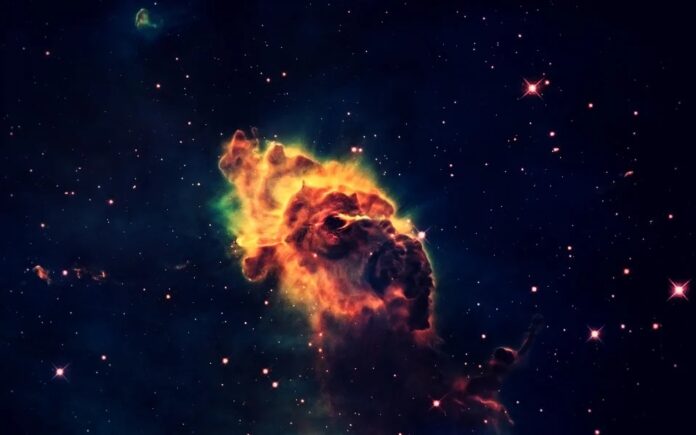All solid bodies in the Universe, whether they are planets, comets or asteroids, are formed from small to large: tiny dust particles are added to give rise to larger and larger objects. But what were the seeds with which the process began, those that billions of years later gave rise to the Moon, Venus or the ground we walk on?
The answer may be found in comets, which are the least processed objects in the Solar System and thus bear witness to what the early nebula was like. A study published in the journal The Astrophysical Journal Supplement Series, shows that its seeds were very porous particles of the size of millimeters, a different scenario than the one contemplated until now.
“Dust particles are present in scenarios as diverse as the interstellar medium, planetary atmospheres, comet tails or the disks around young stars. –point Olga Muñoz, researcher at the Institute of Astrophysics of Andalusia who coordinates the study. Knowing the properties of these particles is essential, not only to evaluate their effects, such as the increase or decrease in temperatures in the case of the Earth’s atmosphere, but also to obtain information on the structure and evolution of the objects where they are found. Dust in certain environments can even reveal the formation history of rock bodies.”.
Universe
In the Solar System, the objects that are the key to unraveling that story are comets. Cometary nuclei are described as icy dust balls and, since their formation at the origins of the Solar System, they have remained far from the Sun’s radiation and at very low temperatures, so that the material that makes them up has hardly changed.
In fact, this pristine nature of comets was confirmed thanks to the Rosetta mission of the European Space Agency (ESA), which accompanied comet 67P in its orbit around the Sun and was able to study it on-site.
“The 67P data touched on a well-known problem about the features of dust particles in the universe. We had, on the one hand, the data from the observations of 67P from the ground that indicated that it is about micron-sized particles (one thousandth of a millimeter), and that they coincide with those of the Giotto mission on Halley’s comet. And, on the other hand, we had the data from the instruments that analyzed the 67P dust in situ and that indicated that the dominant particles measured, approximately, from a tenth of a millimeter to several millimeters, a conclusion that in turn coincides with the data of dust observed in planet-forming disks around young stars”points Fernando Moreno, researcher at the Institute of Astrophysics of Andalusia and author of the work.
Little “cotton balls”
To solve the problem, the team led by Muñoz and his collaborators used the Cosmic Dust Laboratory (CODULAB) of the Andalusian Institute of Astrophysics, which works with analogs of cosmic dust and whose previous results have already shown that the very common practice of assuming that the dust grains are spherical can lead to large errors in the interpretation of the observations.
To date, experimental studies on cosmic dust have worked with tiny particles (from less than one micron to a few hundred microns) and, to compare measurements, the CODULAB was modified in 2017 to study particles up to several millimeters.
The team tested with dust specks of different sizes and characteristics and found the ideal ones, those that were able to reproduce both the signal from the ground observations of comet 67P and those from the instruments on board Rosetta: large, porous, oblate-shaped particles and with inclusions of few microns.
“The results have been spectacular, because they solve the problem and provide a new panorama. If at the time we abandoned the idea that dust grains were spherical, we now have a new model that suggests that the seeds of rocky bodies can measure several millimeters and have porous structures joined by small organic particles: something similar to small dirty cotton ballsMunoz concludes.
Font: Silbia López de la Calle / CSIC
Reference article: https://www.csic.es/es/actualidad-del-csic/los-corpos-solidos-del-universo-se-originaron-por-agregacion-de-motas-de-dust















![[Img #74661]](https://thelatestnews.world/wp-content/uploads/2024/12/The-power-of-ultrasound-300x200.jpg)
Add Comment